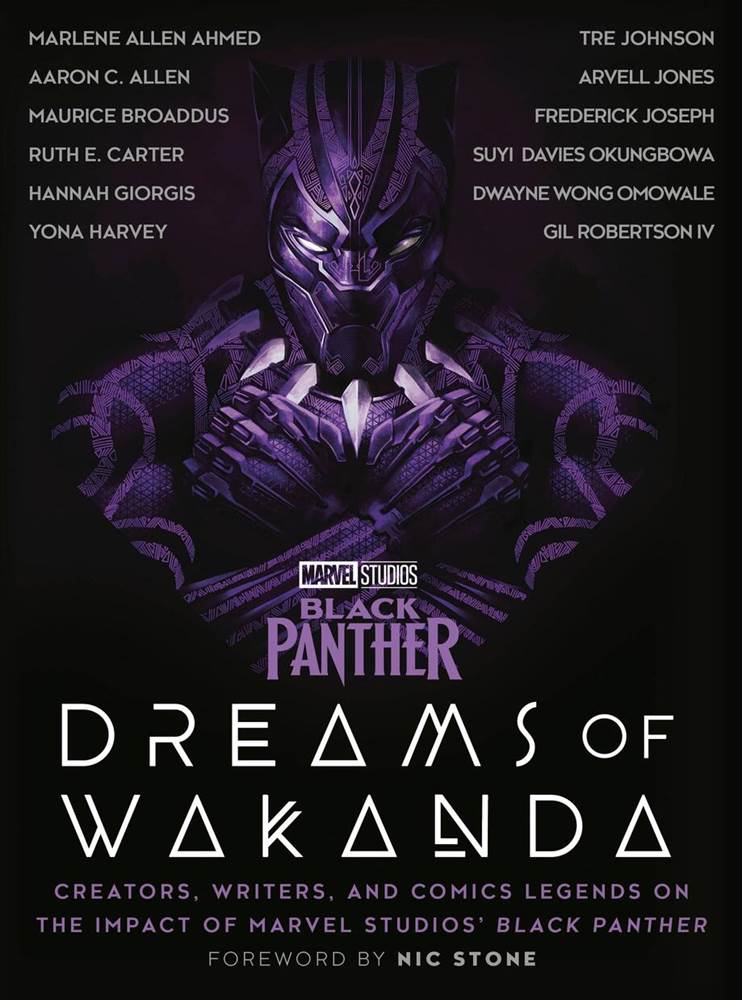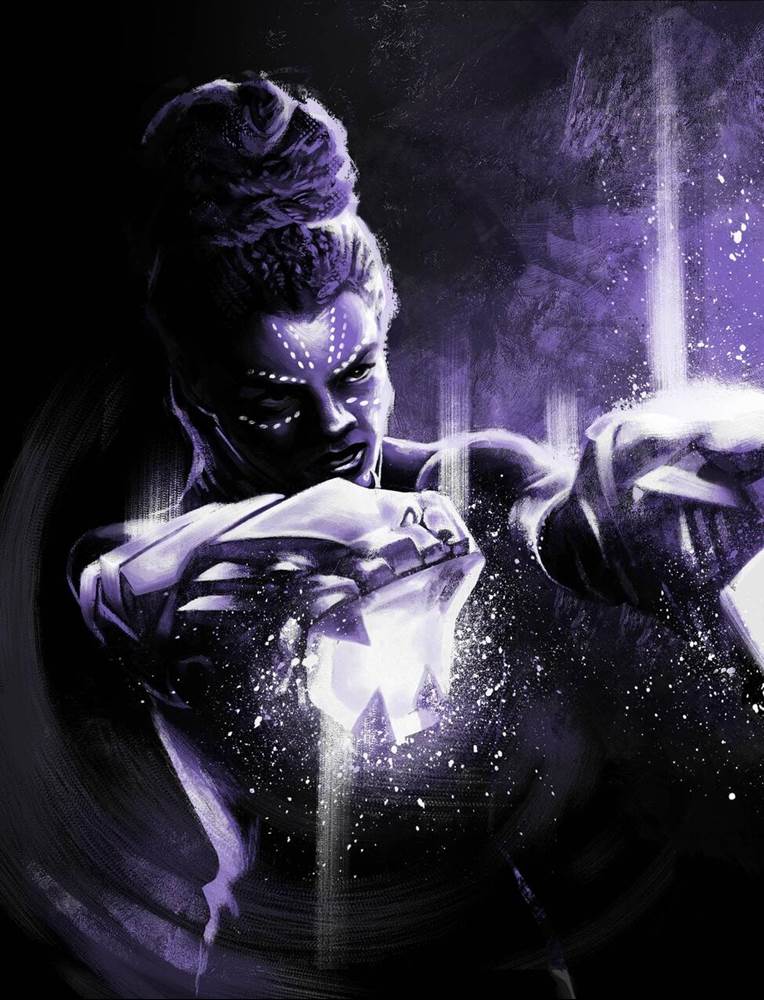Black Panther fans will soon be able to Journey through the Marvel landscape in a bold, beautiful imagining of Wakanda – what it is, how it came to be, and all that it offers for the future – when Black Panther: Dreams of Wakanda hits stores on September 6.
- Marvel Studios' Black Panther: Dreams of Wakanda is a collection of essays and illustrations from creators, writers and comics legends on the impact of Marvel Studios’ Black Panther.
- Marvel has shared an excerpt from the upcoming book, which you can read balow.
- Fans can celebrate the legacy of the film with this collection of all-new personal essays and reflections that shed light on its monumental impact, including firsthand stories from artists involved in the film, cultural analysis from journalists and academics, and thoughtful insights from writers and comics legends.
- The lineup of contributors for this book include:
- Marlene Allen Ahmed
- Aaron C. Allen
- Maurice Broaddus
- Ruth E. Carter
- Hannah Giorgis
- Yona Harvey
- Tre Johnson
- Arvell Jones
- Frederick Joseph
- Suyi Davies Okungbowa
- Dwayne Wong Omowale
- Gil Robertson IV
- Each contributor brings their unique expertise and experience to explore the film’s genesis and significance from every angle.
- Dreams of Wakanda also includes original illustrations by Mateus Manhanini.
- The book covers multiple aspects of Black Panther, including:
- Costume designer Ruth E. Carter takes us through her Afrofuturistic designs.
- Writer Tre Johnson discusses the metaphoric qualities of vibranium.
- Author Yona Harvey reflects on how the film has resonated with audiences across the African diaspora.
- Journalist Hannah Giorgis uncovers how the soundtrack fits into sonic portraits of Blackness.
- You can pick up this timeless collection of essays, available from September 6.
Excerpt from "The Metaphoric Quality of Vibranium" by Tre Johnson:
I’m here to tell you that vibranium is real. How do I know it’s real? Because I’ve sat in Black churches and felt the energy that wells up in there, sitting in the pews, our throats full of layered spiritual emotion. I’ve been to Howard Homecoming and seen the way we collectively coalesce into joy and music. That’s vibranium. It’s the chatter and change that happen in our beauty shops and barbershops, those community gathering places where we reconnect and remake ourselves. That’s vibranium. It’s in our inexhaustible ability to create new dance crazes, to take over social media platforms and create our own dialogues, personas, slang, and culture. Black people hum with the continual motion and energy that make vibranium vibrate; it is in the soles of our feet taking us on the Great Migration, and in the knees of our protest. That’s vibranium. It’s in our dirtbike street culture that’s happening in Oakland, Baltimore, DC, Philadelphia. It’s in the real way we quietly convene and find each other in the office and other cultural spaces, activating a channel of release with each other about what’s happening to us and around us.
I know it is real because I’ve seen love, Black love, between our people; seen the transference of this power into the creation of family. Vibranium is in the naming of our children; it is in the lineage we create in our families. It is the energy that was passed between my Pop-Pop and me as we held hands during his last breaths in the hospital. Absorb, store, and release. Vibranium is in the loving way we collectively embrace ourselves. Vibranium may not be a real substance, but it has a real presence in our lives.
And I know it’s real because of when I saw Black Panther on opening night while I was on vacation in Paris. We’d stood in line for over an hour in an uncharacteristically cold Paris winter with the type of array of Blackness that you could only find in a place like Paris. It was international in feeling, in scope, in strength. When the velvet rope and glass doors finally opened to let moviegoers in, we climbed the majestic theater steps and sat in a grand ballroom teeming with Black people. The entire room hummed in a way that I’ve only felt a few times before and after: walking Broad Street that morning the day after Obama won the presidency, and years later marching through downtown Philadelphia in unity and mourning during 2020’s summer of reckoning. A large burgundy curtain covered the movie screen, and the din of excitement in the theater supercharged everyone in and out of their seats. We exploded and reexploded at several moments: when the curtains slowly opened to reveal the screen; when the Marvel opening logo ended and the voiceover began; when the credits finally ended as T’Challa stood before the world. The diasporic Blackness in the theater and the sheer joy in that room made me and many others in that space cry. Our tears likely meant a lot of things for a lot of people for a lot of reasons. But I know they were good tears. That’s vibranium.


